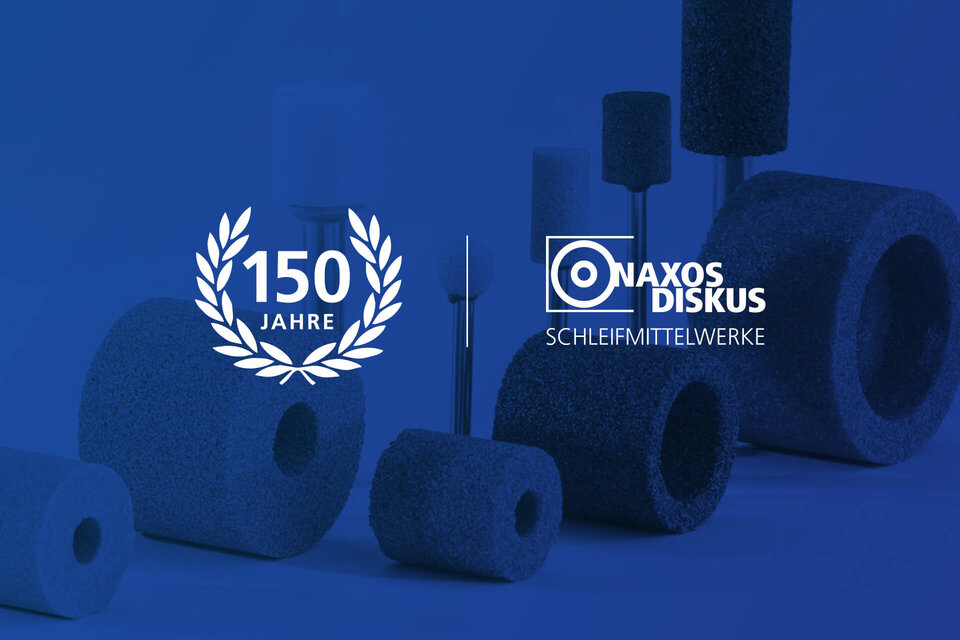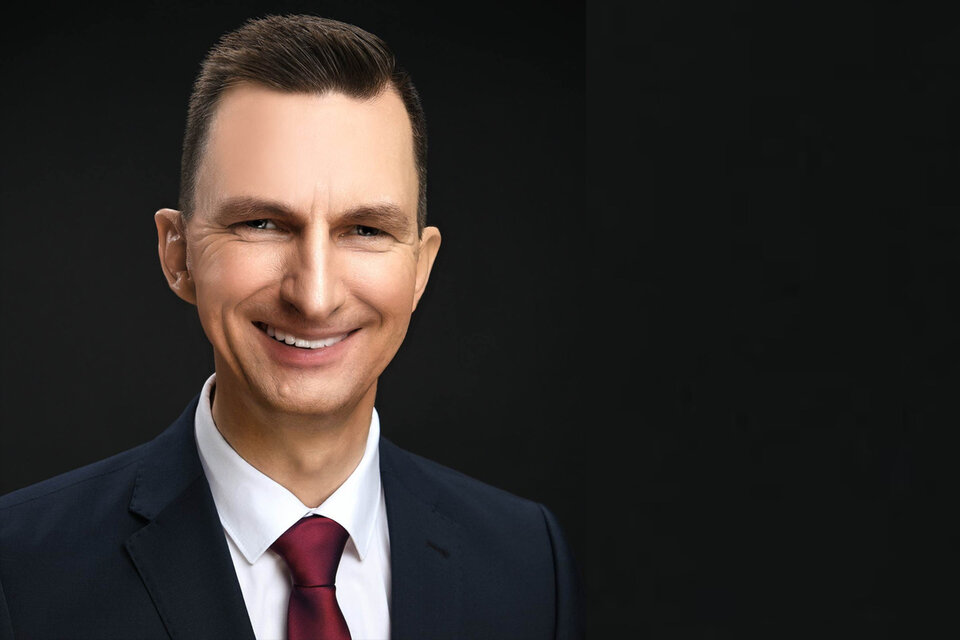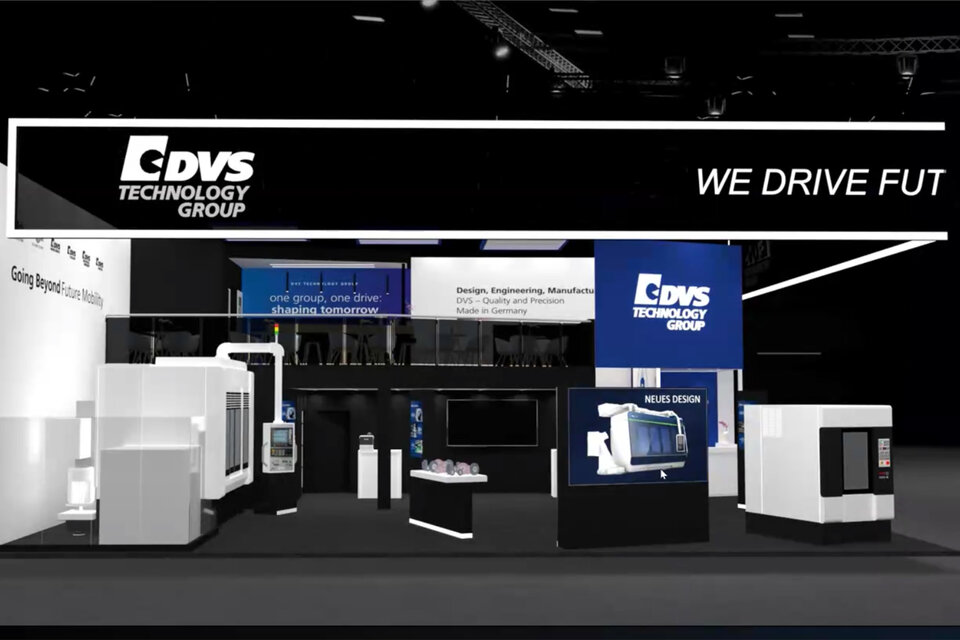On 15 October 1871, the right to mine and produce abrasives was transferred to the newly founded Naxos Union, the "Society of the Genuine Naxos Emery". Now, in 2022 we are close to the 151st birthday. But as with so many other occasions, plans for the celebration in the anniversary year were thwarted by that troublesome pandemic, and so at least this year there was the opportunity to celebrate the historic date a little.
But anyone who has been in business for more than one and a half centuries has also experienced more dramatic turning points in history - and in the case of NAXOS-DISKUS, has survived until today. Ernst Löffler also has personal stories to tell about the last decades - since 1995, first as commercial director and later as managing director, he has experienced and helped shape the company's history. At the anniversary celebration, he went far back to the founding days of the company.
The history of NAXOS-DISKUS Schleifmittel GmbH goes back to Julius Pfungst, who was granted the exclusive right in 1871 to sell genuine emery, mined on the Greek island of Naxos, in Germany through a contract with the "Société du Véritable Emeri de Naxie, Syra". This makes today's NAXOS-DISKUS the abrasives company with the longest history worldwide.
Still in the founding year, steam emery mills were set up at Frankfurter Sandweg 21 and just one year later an application for expansion was filed. Julius Pfungst succeeded in acquiring a 2,064 m² plot of land in today's Wittelsbacheralle for this purpose and in 1873 received permission to set up a "25-horse steam engine" and to build a factory building along with a residential building. At the end of the 1870s, they began to use it to design and build grinding machines. Naxos-Union was therefore also one of the first manufacturers of grinding machines.
In 1880, the annual production was 250 grinding machines, 60-70 workers processed 7.5 tons of raw emery each week. Natural emery had its heyday in the 1920s - at that time, Naxos stopped producing abrasives with natural emery and only used industrially produced corundum, which had been developed and manufactured at the end of the 18th century.
After the death of Julius Pfungst in 1899, Naxos was jointly run by his children Arthur and Marie Pfungst and his widow Rosette. After Arthur Pfungst's death in 1912, Marie Pfungst took over the management. In 1918, the factory, which now employed 700 people, was transformed into the Dr. Arthur Pfungst Foundation. The aim of the foundation was to serve "the common good by spreading education among all classes of the people". The Pfungst family's idea of making education accessible to all levels of society lives on today through the foundation.
After the Nuremberg Laws came into force in 1935, the head of the company had to give up the management of the factory and the chairmanship of the foundation. In 1942, Marie Pfungst was forced to conclude a "home purchase contract" (RM 56,658.17). She was deported to the Theresienstadt concentration camp in 1942 at the age of almost 80, seriously ill and suffering, where she died only half a year later at the age of 80.
From 1942 to 1944, more than 700 people from other European countries had to perform forced labour at the Naxos Union. Their fate is commemorated with a memorial plaque on the listed former factory building in Wittelbacher Allee.
The wartime destruction of the factory sites was largely removed by the end of 1951 thanks to the determined will of the workforce to rebuild. The Naxos-Union abrasives and grinding machine factory quickly recovered and became a global company that significantly influenced the development of grinding technology knowledge in Germany and the world.
However, it became increasingly difficult to operate the abrasives plant in a central location within Frankfurt for many reasons. Therefore, it was decided to move the abrasives plant to a new location and Butzbach in Werner von Siemens Straße 1 was chosen, the current location since 1990. From then on, Naxos-Union, at that time the most modern abrasives plant in Europe, could start the production of abrasives on a total area of 22,357m².
The nineties proved to be an economically difficult phase for Naxos-Union until the abrasives plant was taken over by the Rothenberger family on 15.08.2005, and integrated it into today's DVS TECHNOLOGY GROUP as "Naxos-Diskus Schleifmittelwerke GmbH".
The integration into the DVS TECHNOLOGY GROUP with its mechanical engineering companies, in particular the grinding machine manufacturers Buderus Schleiftechnik, Diskus Werke Schleiftechnik, DVS Universal Grinding and Präwema Antriebstechnik, enabled NAXOS-DISKUS to once again fully exploit its potential. The close partnership with these companies makes Butzbach a centre of state-of-the-art abrasive technology.
The philosophy of the DVS TECHNOLOGY GROUP to sell tools, machines and service as an integrated solution provider is therefore strengthened and the technological lead further expanded. In this context, the new development of the CBN/diamond production, the development and integration of the product group honing rings and honing wheels as well as the further expansion of double surface grinding in the superabrasive and conventional area is worth highlighting.
Along with the development of the company into a drive train specialist, conversion work within the company became necessary in addition to a large number of investments. For example, a separate hall was built for honing ring production. By dismantling the tunnel kiln with a gas consumption of 14,745 kWh per day, corresponding to 5,381,925 kWh per year, or an emission of 1,184 t CO², as well as a corresponding reorientation of the thermal department through individual kilns, NAXOS-DISKUS has also developed, from a sustainable point of view in line with the times.
In summary, NAXOS-DISKUS Schleifmittelwerke GmbH considers itself well prepared for the future and is convinced that it will be able to secure and further expand its position as one of the world's leading manufacturers of abrasive tools. The first one and a half centuries of a changeable, but all in all great success story have been written.
Now the next 150 years will follow with unbroken innovative strength, with an even more focused customer orientation and, above all, with a great deal of optimism.





